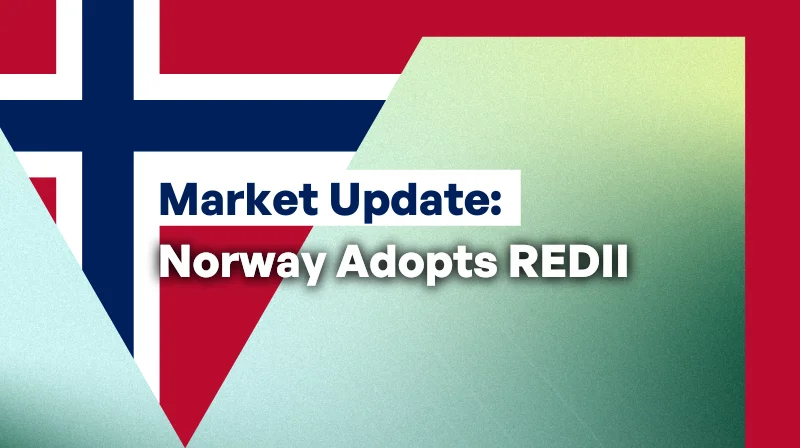

Market Update: Norway Aligns With REDII: What It Means for GO Prices
On 13 June 2025 Norway’s Stortinget consented to the EEA incorporation of RED II. Norway has been notably behind schedule, as when RED III came into force in 2023 (published as Directive (EU) 2023/2413), Norway had yet to implement even RED II from 2018. Finally, adoption is taking place, albeit with Norway-specific EEA adaptations.
If you’ve been following the Norwegian situation in the GO market, you’ll understand that this is a watershed moment for the Nordic GO market. There have been long-standing concerns surrounding double counting.
At its core, the issue rests on the incompatibility of market-based accounting and location-based accounting. Market-based accounting uses GOs to match electricity consumption with renewable generation, while location-based accounting reflects the actual grid mix where the power is consumed, creating an institutionalized double-counting risk if both methods are pursued simultaneously.
The tension has been central to Norway: heavy GO exports have always meant the location-based footprint looks green, while the market-based footprint shows otherwise. Heavy exports have also made the market less appealing for new entrants via price depression - a report commissioned by Google that suggested Norway has been exporting up to four times as many GOs as physical power. This has been significantly reducing the GO sales incentives for additional production.
It’s vital to understand what RED II actually changes for disclosure/claims in Norway, as not everything is solved, but it’s a great step in the right direction. Article 19 has been adopted, but crucially, the update does not import the EU’s full supplier‑mix disclosure regime that sits in the Internal Electricity Market Directive (IEMD). You can understand the IEMD as the “when and how a supplier must disclose” rules, and they have not been taken in fully yet. This means customers don’t yet get contract-specific source breakdowns or the upgraded, harmonised bill content. If/when IEMD is incorporated, it will add those product-level disclosure duties, strengthen the GO linkage in disclosure, and introduce additional consumer rights.
However, it does hard‑wire the GO system into EEA law. When electricity is marketed as renewable, the origin must be guaranteed with cancelled GOs under RED II Article 19. NVE is explicit: if a supplier wants to give customers an individual statement that the electricity is renewable, it must buy (and cancel) GOs; otherwise it must refer to NVE’s residual mix. Without the IEMD integration, Norway will continue to rely on the official residual mix for non‑tracked supply.
Overall, considering that Norway has been benefiting from GO sales for a long time but has been hesitant to integrate fully with best practices on disclosure, this marks a win for the integrity of the GO market across Europe - and hopefully means the IEMD will be implemented in the future.
GO Price outlook: bullish
The adoption is primarily a demand‑side catalyst: more suppliers and corporates will need to cancel GOs to substantiate “renewable” claims, while Nordic supply (hydro, wind) remains abundant year‑to‑year. Hopefully it will mitigate the steady Nordic supply that has been depressing GO markets, as new cancellations increase around annual disclosure periods.
Norway’s RED II alignment hard‑wires GO‑based claims into EEA law and should add steady demand. This demand will be seen especially from retail portfolios and structured corporate sourcing (e.g, PPAs), and should almost certainly materialize in progressive cancellation increases (and corresponding demand increases), seen as RED II duties bite for the first time. Exact price changes are uncertain, but the policy signal is plainly supportive for GO valuations over a multi‑year horizon.




